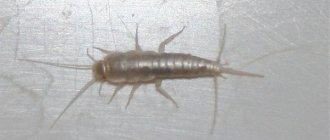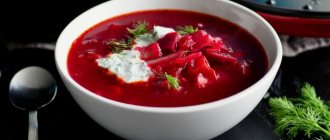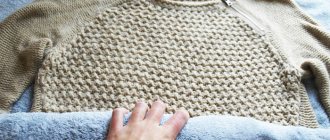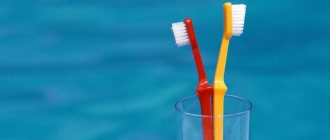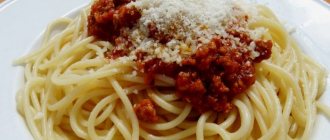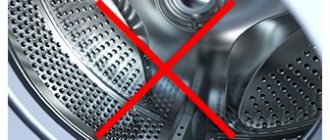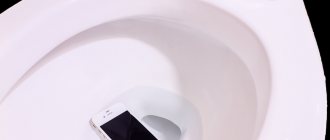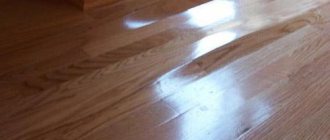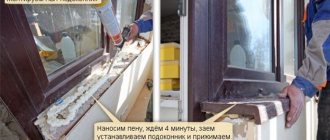Gouache paints
Gouache is a dense and opaque paint. Once dry, it will be matte and velvety. It is perfect for paper, canvas, cardboard or smooth wood surfaces.
Unlike watercolors, gouache paints have less binder, but much more pigments. Due to this, you can cover up unsuccessful areas, and you will be able to paint over even dark spots with lighter paint. The previous layers will not show through, the drawings will come out beautiful, bright and, most importantly, neat.
Store gouache in tightly closed containers at room temperature. It must be protected from cooling below zero. If it so happens that for some reason the paints (gouache) have dried out, what to do with them will be described below in the article.
Prevention of drying out
Masters do not advise mixing shades inside a container - for this there is a special device called a palette. If it is not available, any smooth surface (plate, board, small tray, etc.) will do. Before starting work, each color is thoroughly mixed in its own jar, then some is transferred to the palette.
The gouache is not diluted too much; the consistency should resemble thick sour cream. Painting from jars is not recommended - in an open container the pigment dries faster and the paint can mix with other colors. It is important to collect containers after work, close each jar tightly, and check it.
Jars should not be placed in places where the temperature may be low (below zero). It is sufficient to store at room temperature. You can even use very old kits, including Soviet ones. The main thing is to constantly check the condition of the pigment, add a little water (preferably distilled) if necessary, and mix thoroughly until smooth.
Attention! Acrylic gouache cannot be diluted using these methods. The pigment has a special composition, which water will turn into a hard mass unsuitable for painting.
Thinning paint is not suitable for professional artists. Despite the simplicity of the technique, the pigment is diluted and slightly loses color saturation and other properties. These methods are suitable for amateur drawing or creativity with children.
Source
How to mix gouache correctly
It is best to mix or dilute gouache on a special palette. If it is not there, then an ordinary plate can be an alternative. The paint is very easy to clean.
When starting your work, first of all, mix the paint well in a jar, and only then transfer a small amount of it to the palette, and then mix it with water or other paint, obtaining the desired shade.
Gouache is diluted to the consistency of liquid sour cream, but you need to know when to stop – the paint should not become translucent, it should remain fairly dense. Liquidly applied gouache will leave dark edges when it dries. If the paint is applied too thickly, in several layers, it will not adhere well and will crumble like plaster.
How to speed up paint drying time?
Oil emulsions take a long time to dry, up to 40 hours. In order to speed up the drying of the paint, a special catalyst-drier is added to the product before painting. The substance is introduced into the main product to increase the rate of polymerization of vegetable oils.
Compounds of transition and non-transition metals, as well as metal-containing components: salts of Co, Mn, Pb, K, Ca and others act as drying agents. The composition with a drying accelerator dries within 22-28 hours.
In painting, experts do not recommend adding a drier to the oil: the substance has a negative effect on the paint layer and causes darkening. In addition, the paint pigments also lose their original color.
Pay attention to: How to choose paint for restoring the basement of a building
What to do if the gouache has dried out
Sometimes, when a jar of paint is not tightly closed, the gouache can dry out. You can put it into working condition in this way:
- pour a little water (it should cover the paint a little);
- close the lid tightly and leave the jar in this state for a day;
- if the next day the paint remains thick, you can add a little more water and leave the jar for the second day.
If, thinking about what to do if the gouache has dried out, you decide to use this dilution method, remember: excess water will make the paint layer thin and translucent. After drying, the paint layer will become dirty and crack.
Thus, even the hardest paint can be restored more than once. You need to understand that for professional artists working on works of art, reclaimed paint is not suitable. This option is best used for children's creativity.
Why does gouache dry out?
The composition of gouache includes water, coloring pigments, and an adhesive base. The paint is suitable for painting on different surfaces - paper, glass, plywood, fabric, etc. There are three main reasons for drying out:
- expiration date of paints (initially displayed on the packaging, after opening the container it is significantly reduced);
- a loose lid (a common reason why the composition has to be restored using additional means);
- low quality products.
To reduce the likelihood of paint drying, it is important to follow several rules for handling paints, and do not leave jars open or with the lids not tightly screwed on.
What to do with dried gouache (using a water bath)
There is a second way to dilute gouache - a water bath. You need to prepare a metal steamer (it can be replaced with two containers of different diameters), toothpicks and boiling water. Step-by-step instructions for softening gouache look like this:
- into a jar with dried gouache you need to pour just boiled water, which will completely cover the paint;
- jars of paint are placed in a pan with a smaller diameter. Next, a larger diameter pan is filled halfway with water; a second pan with paints must be placed inside;
- the caps can also be placed in water so that the paint comes off from them;
- bring the water in the container to a boil and reduce the heat so that the liquid bubbles slightly;
- cover the container with a lid;
- the liquid will boil away, so hot water must be added as needed;
- Toothpicks are needed to check how much the paint has softened.
For paint that is not too dry, it will take no more than 20 minutes. If you don’t know what to do, if the gouache has dried to the point of knocking, then just simmer the jars for at least an hour, everything will work out. You need to wait until the gouache is stirred until smooth.
Knowing what to do when paint (gouache) has dried, you can save on buying new materials for creativity. During the dilution process, the paint acquires a liquid consistency and becomes usable again. You just need to remember to protect your hands and clothes, since gouache is difficult to wash off.
Modern quick-drying types of paint
The main characteristic of any emulsion is its drying time.
The drying time depends on the following factors:
- Humidity.
- Air temperature.
- Compound.
Oil paint or varnish dries completely over the course of several days, and a harmful and unpleasant chemical odor is released into the room. If it is not possible to leave your home or workshop, experts recommend using quick-drying materials for home renovation or artistic creation.
The domestic market is represented by a large assortment of quick-drying, odorless paints and enamels. They are made both on water, which quickly evaporates after applying a layer to the surface, and on an organic basis.
The drying process for water-soluble compounds at temperatures up to +7°C is 2-3 times faster than for components in an organic solvent.
There are the following groups of quick-drying water-based emulsions:
A paint catalyst that accelerates its drying is added before applying the composition to the surface.
- Acrylic. Least harmful to humans. Suitable for painting windows, floors or indoor doors, decorative and artistic works, as they are applied to the surface in even layers and dry for 2-4 hours.
- Water-dispersed. They dry in a matter of hours, are used for interior and exterior decoration and decoration of walls and ceilings, are environmentally friendly, do not peel off, and are permeable to air and water vapor.
Pay attention to: How to paint old parquet yourself
In organic solvent:
- Alkyd. Glycerin or pentaerythritol is used as a component. They are applied to wood, metal, and stone to obtain a shiny, durable coating of rich color; they are rarely used for painting. Drying time: 8-10 hours.
- Polyurethane. Drying time is 2 hours; you do not need to wait several days to apply the next layer. A thin film formed on wood, metal or concrete protects the surface from mold, corrosion, the destructive effects of parasites, precipitation and other external factors. The composition is used for interior and exterior decoration. One-component water-based paints on a wooden floor dry up to 5 hours, complete polymerization of the layer ends after 12 hours.
- Oil compositions modified with polyurethane. Dries in 5-6 hours.
- Quick-drying paints include alcohol-acetone based nitro paints. If you spray them from aerosol cans, the first layer will dry in 20 minutes, the second in 1 hour. Nitro paints in liquid form dry more slowly and emit a sharp and strong odor. Due to the high level of toxicity, work is performed only in respirators, otherwise inhaling solvent evaporation will lead to severe chemical poisoning.
A hand sprayer will help apply a thinner layer, and a heat gun will raise the temperature in the room, thereby reducing the drying time of the paint.
Watercolor
Finally some good news: watercolor can be restored. Watercolor is 80% pigment and the remaining 20% is binder and glue.
If you used watercolor in tubes and it dried out, then simply cut the packaging and use the paint as regular watercolor in pans. But its plastic properties will be slightly worse.
So, if you want to completely restore plasticity, you need gum arabic for this.
Gum arabic is a binder in watercolors that dissolves easily in water and provides plasticity.
Take an empty jar (you can use one that has run out of gouache), stir the watercolor with water and a small amount of gum arabic. This way you will get the original consistency.
Remember to close the lid tightly to avoid drying out again.
Watercolor is also sold in cuvettes, where it is always in its usual solid state.
This form is more convenient to use, as it does not require restoration.
Want to learn more about watercolor techniques and painting techniques? I advise you to read this article.
Oil
In oil paints the binder is linseed oil. It is thanks to this component that paints harden to a stone state, after which they cannot be used.
This is why I recommend not squeezing a large amount of paint out of the tube.
Because then all the unused paint turns into solid masses that cannot be used in the future. And, by the way, they can only be cleaned with a hairdryer. But usually they just buy a new palette so as not to bother with dried material.
Cleaning dried oil is quite difficult.
If the paint has dried right in the tube, it cannot be used either. Although oil in tubes can be stored for many years, there is still a chance of hardening.
- For example, if the tube is not closed tightly.
- Or if there are cracks on the surface of the package, air also penetrates inside the package, causing the oil to harden.
How to restore dried oil paints?
Unfortunately, there can only be one piece of advice here: buy new tubes.
Second wind
When a muse comes to an artist, he is completely immersed in the creative process. And it happens that after finishing the work there is no energy or time left to wash the brushes and palette, close the tubes and put the work place in order.
All creative people are familiar with this situation, and sometimes art materials suffer because of it.
Paints are most affected. But if you left the jar open or for some other reason they dried out, this is not a reason to despair.
Waterborne paints can last a long time as they can be restored to their original state. But oil, acrylic and tempera paints cannot be restored. Why? The fact is that the ability to restore paint depends on the binder included in the composition.
Let's look at each material separately to understand what you can do when it dries.
Dilution features
The basis of oil paint is pigment mixed with drying oil until smooth. While the mixture is not being used, the heavy powder pigment can settle, the middle hardens, and oil accumulates on top, so you need to thoroughly stir or shake the jar before working. If you need to bring the coloring substance to a more liquid state, first answer two questions:
- What are you going to use the thinned paint for: on its own to paint the surface or as a primer?
- What type of drying oil is the composition mixed with?
